Major Draw
What is the appeal of Shirow Masamune's tough public security agent, Motoko Kusanagi?
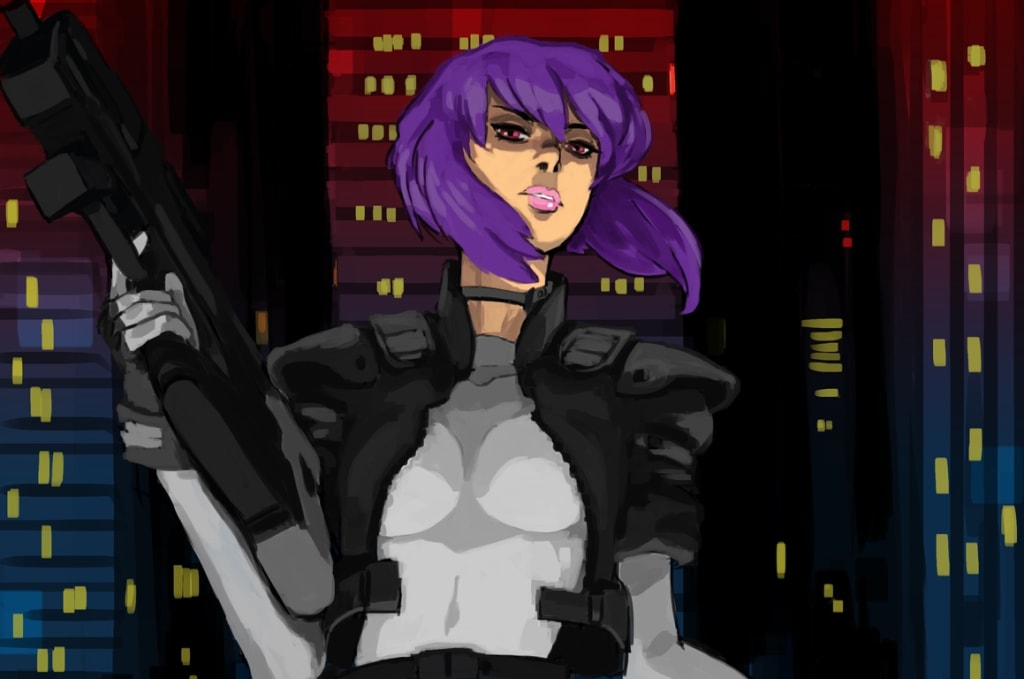
The countdown is on until the release of Hollywood's big-budget action-thriller adaptation of Shirow Masamune's Ghost in the Shell. Both highly-anticipated and highly-reviled, the movie has become the epicenter of long threads on various social media sites. Much of the hype surrounds the intensity and beauty of the special effects and hope for an interesting storyline, while derision centers on the casting of Scarlett Johansson as Motoko Kusanagi (renamed "Mira"), the protagonist. Equally understand-able is the trepidation that some fans feel considering what a strong presence "the Major" – as she is referred to by fans and her underlings alike – has throughout the franchise.
Introduced in the 1989 serialized manga of the same title,Kusanagi has gone on to lead her crew of public security operatives through a multitude of media including several prequel and sequel manga, four anime movies, three TV series, several OVAs, seven novels, eight video games, and, as mentioned above, a live-action Hollywood movie – all in the span of nearly 30 years. (Did I get it all? Possibly not. A complete list of Ghost in the Shell media/works in Japanese.)
Throughout the span of the franchise, the Major has been a no-nonsense high-tech, high-level government agent who will do anything in her power to get the job done. Fearless and unstoppable, she utilizes both her cyborg body (enhanced strength, speed and agility, built-in communications, input/output capabilities, active (thermoptic)camouflage etc.), and skills (hacking, infiltration, social engineering skills, etc.) to overcome hackers and military hardware alike in her search for the truth and re-establishment of state security.
Having given up body, and regulating relationships to short-term or non-existent status, she is utterly devoted to duty. However, instead of alienating her from everything and everyone around her, this is her strength. She derives life and camaraderie from her journeys through the dark networks of cybercrime. She sees opportunity, enlightenment, and potential in the myriad of schemes, plots and criminal activity that threatens the state. She takes nothing for granted, and always has a backup plan – even if it involves putting her own head clearly on the chopping block.
Kusanagi isn't a bit player. She is a powerful storm of change working behind the scenes for the overall good of society, yet at the same time, she hasn't given up that which makes her an individual, not even in the face of possibly "losing" said personality to join with the advanced artificial intelligence program, Project 2501, aka "the Puppet Master". This makes for interesting character dichotomy when considering the emphasis that Japanese society places on repression of the individual over group-orientated goals. The very same society she is sacrificing herself to protect even after she leaves Section 9 (in the movie and manga, whereas the Stand Alone Complex series is touted as an alternate timeline wherein Kusanagi never met the Puppet Master).
To be certain, Motoko was originally popular with Young Magazine readers in Japan, and then a small group of fans outside Japan who caught Oshii's movie adaptation. Outside those two groups though, neither Motoko or the movie had drawn much attraction from women in the mid-to-late 90s. It wasn't until the release of the initial TV series Ghost in the Shell: Stand Alone Complex (2002) and the movie sequel Ghost in the Shell 2: Innocence (2004) that a new generation of viewers, consisting of both men and women, began to appreciate the series and the character.
Seemingly overnight innumerable fan artists and cosplayers, endless articles and reviews, and a tsunami of media rose to sweep across both traditional and online media. In reality, it was a slow build over time, of course, which in turn, begs the question: What is the Major's draw that brings fans not only into the franchise, but back time and again as well?
Perhaps it was the slight change in her character from the less contemplative enigma in Oshii's film to a more relatable character that can actually be seen in the original comics as well that broke the ice for women in the newer generation of fans.
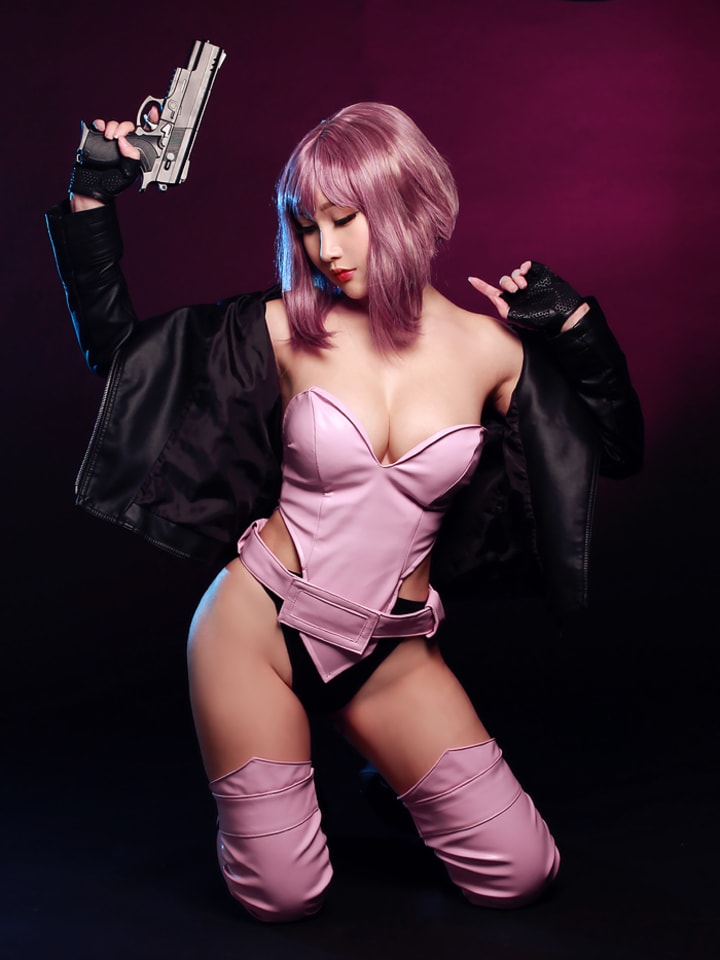
Major Motoko Kusanagi cosplay by RinnieRiot
An informal poll conducted on social media sites reveals a multitude of fan opinions.
To be sure, there were a ton of male and female fans alike who all admitted their admiration of Kusanagi's more visual attributes, her forays into carnal pleasures (in the manga), and her general ability to deal some serious damage. But those comments didn't make up the majority.
What impressed fans most was not who or what she was physically, but what she represented in terms of everything from her skill sets to her humanity, and deeper still what she represented to humanity and us all.
As a "full-body" cyborg, the entity known as Motoko Kusanagi has given herself fully to her cause, and in doing so transcended the flesh world. She is transhuman, and thus it can be speculated, that she has given up everything from her birth body and looks to her birth personality and traits. Moreover, throughout the movie, in a world where memories and thoughts can be manipulated like code, she questions the validity of her own memories.
Fans were quick to recognize though that her transformation into post-human entity is where her greatest appeal lies. She becomes the embodiment of feminism, humanism, strength, courage... and justice. While certainly all of these concepts and ideas will mean different things to different fans, everyone seemed to agree that these were enlightened states of humanity; humanity at its potential best, even if flawed. Something to aspire to.
I am most attracted to the first movie Motoko. In the first movie, her appearance was so... ordinary, but she was such an extraordinary character in every sense. She was profoundly meditative and delicate, but also strong and persistent beyond belief. She encompassed the very best of traits otherwise traditionally separated into masculine and feminine and that, I think, was the most important message of all. – Mona Popović
Kusanagi is appealing on all levels, transcending age, sexuality, gender, sensuality, nationality... the list is endless. It is with no great difficulty to see how she appeals to fans from different walks of life – those in our society who wish to reach beyond their own flesh to reach an equilibrium that expresses their true selves.
She, at first, seems like a very feminine gynoid but has a muted, almost genderless, body that is still sexy. She is lithe and delicate (physically and emotionally) but yields tremendous power and intelligence, and that portrays her as something beyond the "femme fatale" stereotype.She is just over all a well-fleshed out character and a positive role model....whether you're cisgender or trans you can easily imprint yourself onto her because of her nature as a cybernetic organism. – Morrigan Camp
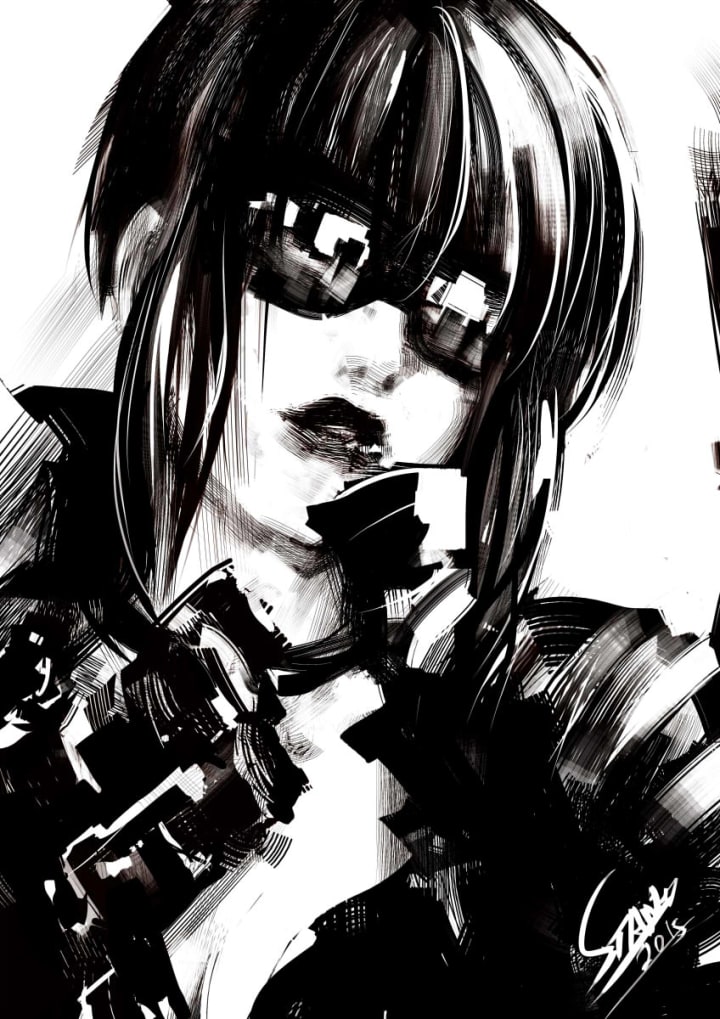
Motoko Kusanagi by OnishinX
Ultimately, though, everything boils down to her humanity...
Motoko is a form of transhumanism or post-humanism that advocates compassion and kindness despite the fact the human body is biologically frail and mortal. Her cyborgization reminds me of prosthetics. They aren't less human for having prosthetics, they [simply want] to be able to live their lives.I think the term "augmented" is the term we use now, but when [the original] Ghost in the Shell movie came out with the idea of a how a full-body prosthetic didn't hinder [Motoko's] love of scuba diving [that] really made me feel something profoundly sad. Batou tries to get her to stop, but she can't help it. Nowadays people are trying to build more beautiful prosthetics for veterans that come back – adding the option [of] heels for prosthetic feet, and Swarovski crystals for high-fashion, glittering arms.Even Batou in the second movie seemingly moved by Motoko ends up getting a dog and revealing despite his hand being a clone of his old one – its true use is in petting his beloved dog.It's not the weaponization of the human body that stood out to me – it's the fact that technology is human-designed and human-used. Puppet Master longed for humanity, the option to change – the option to replicate with variation – and sensory experiences that are denied to a purely Artificial Intelligence. I think it was like even Puppet Master has personhood, but is really an incredibly disabled person with no static form. When Motoko merges [with it,] she was still human and I think the Puppet Master (Project 2501) was no longer disabled after that either, as a person. In turn, Motoko gained hacking abilities and a very different thought process – but her wants in the manga made me think she's enjoying the kindnesses and fun that we born "abled" take for granted. I might never be able to go invisible or ride a Tachikoma, but I really look up to Motoko for her kindness to both AI and humans. – May Kwan
Motoko Kusanagi may have originally been created as a tough, ass-kicking public security agent with a hot body and lesbian tendencies, but it is clear that fans have been able to see past those stylistic-only attributes, and embrace the humanity within her to elevate the character into one of the most beloved of our time. And indeed, she is a character of and for our time.
A final note from the author: This subject matter of this piece just scratches the surface of the Major's appeal, and would make for a fascinating dissertation. But I didn't want to subject either myself, or readers, to any such fancy.
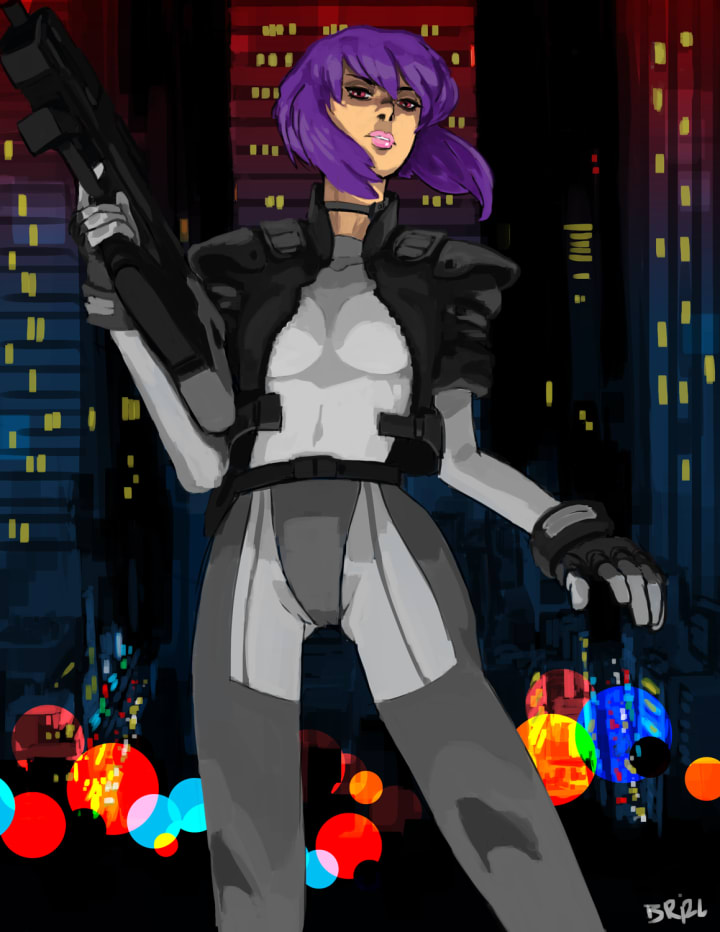
Original art by BRiZL
About the Creator
Made in DNA
The not-yet bestselling, non-award winning author of work you haven't read yet!
Work spans various genres -- scifi, weird, non-fiction, life in Japan.
Campsite Bio (website, Twitter, FB, IG, Mastodon, etc.)


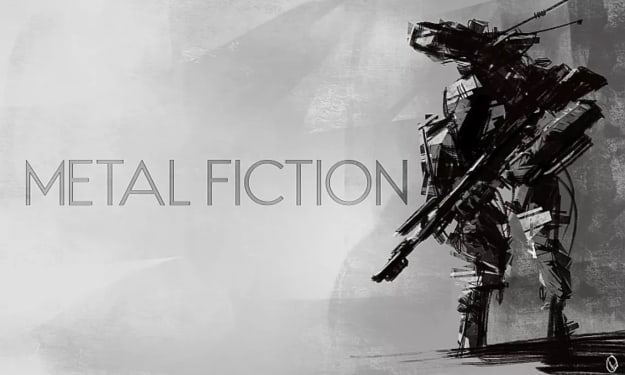



Comments
There are no comments for this story
Be the first to respond and start the conversation.